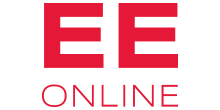Enabled by increasing amounts of Distributed Energy Resources (DER), utilities and large facilities are turning to microgrids to support the resiliency of electric service in the aftermath of increasingly frequent, extreme weather events, as well as for grid support.
Yet microgrids’ ability to ‘island’ and thus operate separately from the central grid – powered by DER especially solar photovoltaic (PV) arrays, fuel cells, generators and energy storage – depend on three factors that have inhibited uptake of this cost-effective and technically feasible solution.
First, utilities must implement new control methodologies – both direct and indirect – to enable microgrids that enable greater DER integration, regardless of who owns the DER, to support enhanced resiliency.
Second, states have been slow to enact policies that incentivize the use of “smart inverters” for solar PV arrays, energy storage, fuel cells and other DC-based DER devices. Smart inverter technology can perform commanded or automated grid-balancing functions at the point of DER to grid interconnections, thus avoiding grid imbalances.
And third, inverter vendors and utilities continue the work underway on common information models such as IEC 61850 and wire protocol standards such as DNP3 for inverter-grid communications to facilitate efficient, low-cost integration of DER assets into control systems.
Progress is occurring on all three fronts and stakeholders – virtually all of us – may appreciate an update on the issues and how they’re being resolved, as microgrids represent a flexible means of addressing many utility challenges as well as benefitting civic and commercial entities seeking greater energy reliability and resiliency.
Utilities and controllers
Utilities are employing microgrids to manage reliability and resiliency issues relating to extreme weather, as well as instability on distribution circuits from high penetration of rooftop solar PV by residential customers and, in some cases, underserved feeders with high peak load. Utility sponsorship offers control of such projects and more leeway in configuring the microgrid for optimal integration, and more certain regulatory approval.
Utilities have also been asked to integrate non-utility microgrids sponsored by large customers such as corporate or educational campuses, hospitals or even municipalities, in which case the utility must manage a resource designed by others.
In the former case, a utility must implement advanced controllers that directly control – really, orchestrate – load, DER and other factors. In the latter case, the utility needs visibility into the microgrid in question and must apply indirect controls that manage the resource at the point of interconnection.
Due to the complexities involved, utilities often turn to third parties for microgrid and controller designs. The same is true for modeling that simulates microgrid operations and identifies microgrid power quality issues such as voltage, frequency and harmonics, in order to mitigate those issues. Utilities should ascertain that their consultant has deep experience in design, modeling and simulation, and in mitigation strategies – particularly with regard to DER-based, non-spinning generation. Managing the use of non-spinning DER, particularly when a microgrid is in island mode, can be particularly challenging and a third party should demonstrate experience and expertise in this area.
Suffice to say here, this is a highly complex technical challenge that is being met by ongoing innovation as utility-sponsored and non-utility sponsored microgrids are integrated with the macro-grid.
As to the innovations currently being explored, I’ll simply quote the conclusion of a report, ‘Grid Interactive Microgrid Controllers and the Management of Aggregated Distributed Energy Resources (DER)’ released in November 2015 by the utility-sponsored Electric Power Research Institute (EPRI).
“For more advanced functionality, e.g., black start or anything with sequencing, [controller] messaging [capabilities remain immature]… In some situations, this gap can be managed through DMS [Distribution Management System]; however, in the future messages will need to be expanded. As standards evolve, future microgrid controller development should include an architecture, communications protocols and standard messages. Until these things are achieved, true interoperability will not be reached.”
Smart inverter policy
As you may know, an inverter is a component of a DER system that converts DC power to AC power for on-site consumption or injection into the grid at the point of interconnection. A smart inverter is digital, programmable and enables two-way communications for monitoring and control. Smart inverters allow optimal management of microgrid- and DER-related resources on the distribution system.
California’s ambitious renewable portfolio standard, revised recently to 50 percent by 2030, drove efforts to refine smart inverter policy and, thus, its technology, via the Smart Inverter Working Group (SIWG) sponsored by the California Public Utility Commission (CPUC) and the California Energy Commission (CEC). (The SIWG is comprised of state agencies, utilities, vendors, trade associations and advocacy groups, and was asked to identify technically feasible smart inverter functions and provide a road map.)
The SIWG’s work on I-DER (inverter-based DER) led to revisions of California’s Rule 21 and coordinated with parallel work on revisions to IEEE 1547.
Rule 21 contains CPUC-approved requirements, including technical and procedural criteria, for utility- I-DER interconnections. This rule, however, did not address small-scale DER and effectively increased costs to non-utility DER and microgrid sponsors. That led to the need for a revision to IEEE 1547 to recognize and support the benefits of smart inverters.
IEEE 1547 is a global standard for interconnecting DER with utility distribution systems; it needed revisions to account for key microgrid characteristics such as islanding. Briefly, IEEE 1547 was written to prevent unintentional islanding of grid-connected generation. Its ongoing revisions enable intentional islanding when a microgrid is designed to function in either grid-connected or islanded mode.
California has largely adopted a series of revisions that phase in implementation of various I-DER functionalities. IEEE 1547 continues to be revised to fine-tune needed changes to support the islanding/ anti-islanding provisions that optimize grid-to-I-DER interconnections.
Though we’ve focused here on just one state’s progress, Hawaii and Minnesota have also revised policies to support the role of smart inverters and other means to encourage microgrid adoption. Meanwhile, Arizona, Connecticut and New York, among other states, are studying the issue.
Common information models
The third area of heavy lifting in pursuit of microgrid enablement is the work that smart inverter vendors and utilities are pursuing on common information models such as IEC 61850 and wire protocol standards such as DNP3 for inverter-grid communications. The focus here is on facilitating the efficient, cost-effective integration of DER assets such as those within microgrids into utility control systems such as DMS, DERMS (Distributed Energy Resource Management Systems) and SCADA (Supervisory Control and Data Acquisition).
An array of stakeholders – including EPRI, the SIWG, the SunSpec Alliance (solar- and storage-related stakeholders) and MESA (Modular Energy Storage Architecture), among others – continue working on mutually agreeable protocols to incorporate IEC 61850’s common information model, IEC DNP 3’s wire protocol standards and smart inverter capabilities.
Led by EPRI, the above stakeholders are currently drafting a DNP3 Application Note for energy storage systems and solar photovoltaic systems that provides a single standard for key microgrid components. A joint EPRI-SunSpec Alliance project is developing a test framework for DNP3 communications with DERs using the Application Note.
Utilities are using third party assistance to design microgrids especially microgrid controllers, to model and simulate microgrid operation which identifies microgrid power quality issues in terms of voltage, frequency and harmonics, and to mitigate control system issues. When evaluating third-party assistance, utilities should look for experience with design, modeling and simulation of microgrid operation e.g. in order to identify issues with DER-based generation especially those dependent on non-spinning generation. Microgrid design issues which need to be considered through modeling include voltage collapse and stability, analyses of power flow, short circuit, protection, and relaying.
Looking ahead
Once these three main areas of current effort bear fruit, the technology, standards and policy will be in place to achieve more widespread, cost-effective microgrid implementations, for both utilities and third parties. It will be up to state-level regulators to recognize and endorse those technologies, standards and policies to realize the reliability and resiliency benefits that microgrids offer.
About the Author
 Kay Stefferud, director of implementation services at EnerNex, has overseen projects that require the design and testing of microgrids as well as assessing the impacts of distributed energy resources, including solar PV systems. Stefferud recently served as program manager for the California Energy Commission’s Utility-Scale Renewable Energy Project (2011-2015).
Kay Stefferud, director of implementation services at EnerNex, has overseen projects that require the design and testing of microgrids as well as assessing the impacts of distributed energy resources, including solar PV systems. Stefferud recently served as program manager for the California Energy Commission’s Utility-Scale Renewable Energy Project (2011-2015).






